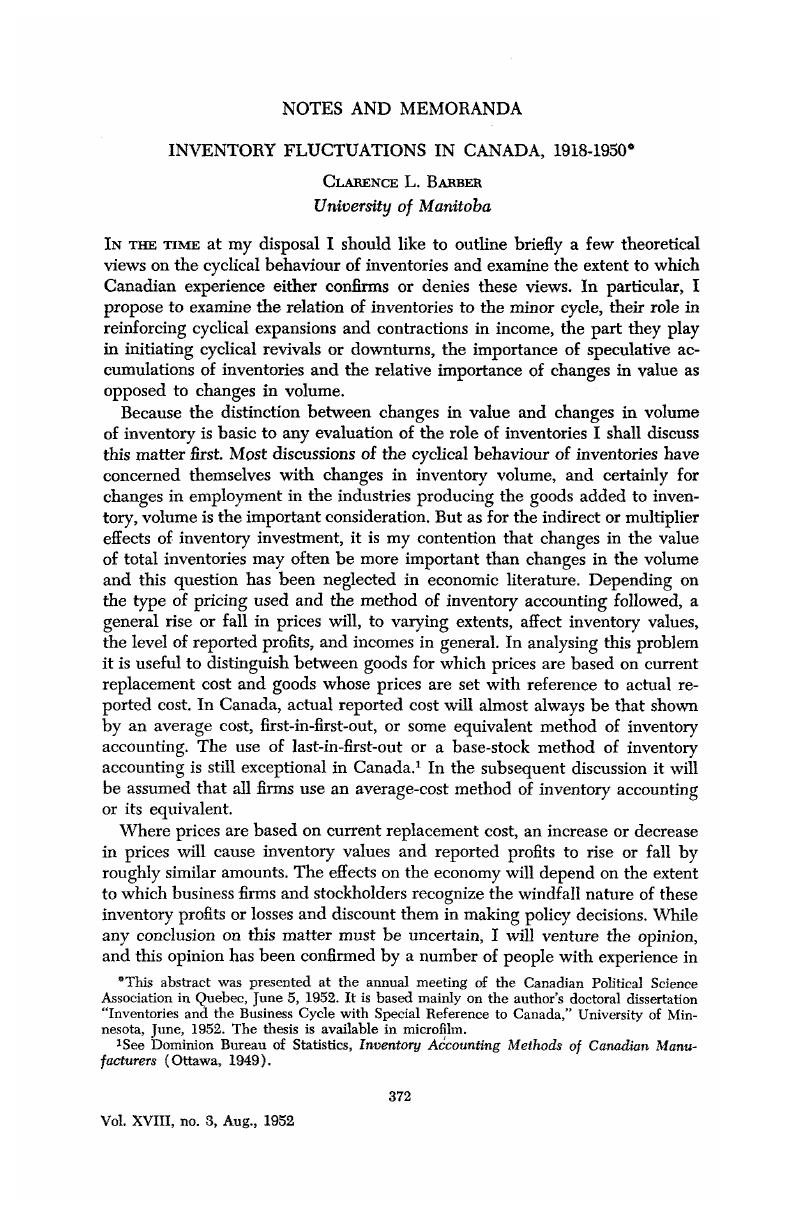No CrossRef data available.
Article contents
Inventory Fluctuations in Canada, 1918–1950*
Published online by Cambridge University Press: 07 November 2014
Abstract

- Type
- Notes and Memoranda
- Information
- Canadian Journal of Economics and Political Science/Revue canadienne de economiques et science politique , Volume 18 , Issue 3 , August 1952 , pp. 372 - 378
- Copyright
- Copyright © Canadian Political Science Association 1952
Footnotes
This abstract was presented at the annual meeting of the Canadian Political Science Association in Quebec, June 5, 1952. It is based mainly on the author's doctoral dissertation “Inventories and the Business Cycle with Special Reference to Canada,” University of Minnesota, June, 1952. The thesis is available in microfilm.
References
1 See Dominion Bureau of Statistics, Inventory Accounting Methods of Canadian Manufacturers (Ottawa, 1949).Google Scholar
2 See Butters, J. Keith, Effects of Taxation: Inventpry Accounting and Policies (Cambridge, 1949), chap. v.Google Scholar
3 Dominion Bureau of Statistics, Inventory Accounting Methods of Canadian Manufacturers.
4 Report of Royal Commission on Prices (Ottawa, 1949), III, ix, 219.Google Scholar Pricing on the basis of the actual cost shown by an average cost or first-in-first-out method of inventory accounting also helps to explain a well-known characteristic of cyclical price behaviour, the fact that prices at early stages of production lead prices at later stages. The length of time required for the post-Korean rise in raw-wool prices to reach the consumer level is a case in point.
5 Ibid., 332.
6 Application of the acceleration principle to investment in inventories has been made by numerous writers. See, for example, von Haberler, G., Prosperity and Depression (2nd ed. rev., Geneva, 1939), 94–5.Google Scholar
7 See Metzler's comment on Abramovitz's paper in Conference on Business Cycles (New York, 1951), 325–33Google Scholar and the same author's two earlier papers “The Nature and Stability of Inventory Cycles,” Review of Economic Statistics, Aug., 1941, and “Factors Governing the Length of Inventory Cycles,” Review of Economic Statistics, Feb., 1947.
8 My tentative dates for the turning points of these three recessions are as follows: peak October, 1920, trough January, 1922; peak October, 1923, trough December, 1924; peak October, 1937, trough August, 1938.
9 Keynes has expressed the opposite opinion but I can see no basis for his view. Cf., however, Keynes's statement, “The addition to the carryover is an addition to current investment. This conclusion is not invalidated if prices fall sharply.” The General Theory of Employment, Interest and Money, 330.
10 Abramovitz, M., Inventories and Business Cycles, with Special Reference to Manufacturers' Inventories (New York, 1950), 476–7.Google Scholar


